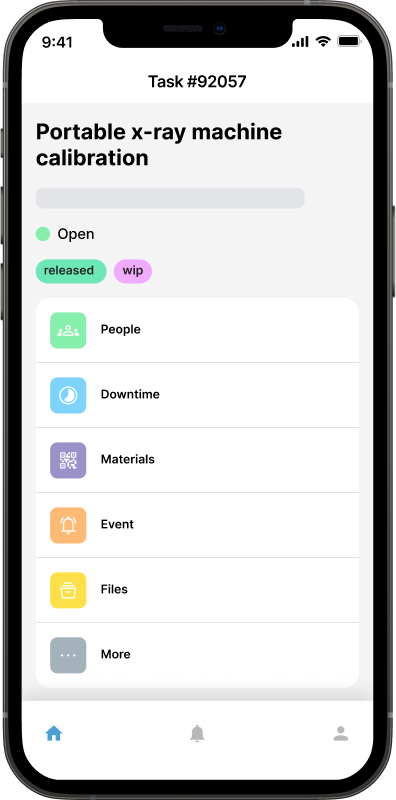CMMS Software & Traceable Physical Assets: Why They Should be Tracked

Physical assets & CMMS tracking
Traceable assets in the context of CMMS software are tangible that are monitored throughout their lifecycle. These physical assets including equipment, vehicles and machinery in any number of different industries. The process of tracing the asset history involves capturing and recording relevant information at different stages, such as acquisition, maintenance, utilization, and disposal.
The tracking of assets offers several benefits for organizations across various industries. Here, we explore three key concepts of traceable assets and discuss their advantages in the context of CMMS.
Improving accountability
CMMS (Computerized Maintenance Management System) software plays a crucial role in enhancing the accountability of managing and tracking physical assets within an organization. Firstly, CMMS provides a centralized platform for storing comprehensive information about assets, including their specifications, maintenance history, location, and associated documentation. By maintaining a detailed asset database, CMMS software ensures that all relevant stakeholders have access to accurate and up-to-date information, promoting transparency and accountability in asset management.

CMMS software facilitates systematic tracking and monitoring of asset activities throughout their lifecycle. Maintenance tasks, inspections, repairs, and preventive maintenance schedules can be logged and tracked within the CMMS, providing a complete audit trail of asset-related activities. This ensures that maintenance tasks are completed on time and according to established procedures, reducing the risk of oversight or neglect. Additionally, CMMS software enables real-time visibility into asset status and performance, allowing stakeholders to quickly identify and address any issues that may arise.
Moreover, CMMS software enhances accountability by facilitating better communication and collaboration among maintenance teams and other departments. Maintenance requests, work orders, and asset-related information can be easily shared and accessed by authorized users within the organization. This promotes accountability by ensuring that everyone involved in asset management is aware of their responsibilities and can track the progress of maintenance tasks in real-time.
Creating operational efficiencies
CMMS software plays a key role in creating operational efficiencies within organizations by streamlining maintenance processes, optimizing resource allocation, and improving overall productivity. It automates routine maintenance tasks and workflows, reducing the need for manual intervention and minimizing administrative overhead. Work orders can be generated automatically based on predefined metrics and schedules or triggered by asset condition monitoring devices, ensuring that maintenance activities are initiated promptly and efficiently.
CMMS software facilitates better resource allocation by providing visibility into maintenance workload, technician availability, and asset criticality. Maintenance managers can use the CMMS to prioritize tasks, assign work orders to the most appropriate technicians, and optimize scheduling to minimize downtime and maximize asset uptime. By ensuring that resources are allocated effectively and tasks are completed in a timely manner, CMMS software helps organizations achieve higher levels of operational efficiency.
Utilizing CMMS, organizations are better positioned to make data-driven decisions by providing insights into maintenance performance, asset health, and cost trends. Through built-in reporting and analytics capabilities, stakeholders can access real-time data on key metrics such as mean time to repair (MTTR), mean time between failures (MTBF), and maintenance costs per asset. This enables organizations to identify areas for improvement, implement preventive maintenance strategies, and allocate resources more effectively to optimize operational efficiency.
Collaboration and communication among maintenance teams, other departments, and external stakeholders is also an important benefit. With features such as mobile CMMS access, task assignment, and real-time updates, CMMS software ensures that everyone involved in maintenance activities is kept informed and can collaborate seamlessly to resolve issues and achieve common goals. This improves overall productivity and helps organizations meet their operational objectives more efficiently.
Enhancing compliance
CMMS also plays a vital role in enhancing compliance within organizations by providing tools and functionalities to ensure that maintenance activities adhere to regulatory requirements, industry standards, and internal policies.
Firstly, CMMS software facilitates the documentation and management of compliance-related information, including maintenance procedures, safety protocols, regulatory standards, and certification requirements. By maintaining a centralized repository of compliance documentation within the CMMS, organizations can ensure that all relevant stakeholders have access to up-to-date information and can easily demonstrate compliance during audits or inspections.
CMMS software also helps organizations establish and enforce standardized maintenance procedures and protocols to ensure consistency and compliance across all maintenance activities. Work orders, preventative maintenance schedules, and inspection checklists can be configured within the CMMS to include specific compliance requirements and procedures. This ensures that maintenance tasks are performed according to established guidelines and best practices, reducing the risk of non-compliance and associated penalties or liabilities.

Additionally, CMMS software enables organizations to track and monitor compliance-related metrics and key performance indicators (KPIs) to ensure that maintenance activities meet regulatory requirements and performance targets. Built-in reporting and analytics capabilities allow stakeholders to generate compliance reports, track trends, and identify areas for improvement. This data-driven approach to compliance management enables organizations to proactively address issues, implement corrective actions, and continuously improve their compliance processes.
CMMS software fosters accountability and transparency in compliance management by providing audit trails and documentation trails for all maintenance activities. Maintenance records, inspection reports, and compliance documentation are stored securely within the CMMS, ensuring traceability and accountability for all maintenance-related actions. This not only facilitates regulatory audits and inspections but also helps organizations demonstrate due diligence and adherence to compliance standards to regulators, clients, and other stakeholders.
The benefits of tracing assets
The utilization of CMMS software significantly enhances accountability, operational efficiencies, and compliance within organizations. By providing a centralized platform for storing comprehensive asset information, CMMS software promotes transparency and ensures that all stakeholders have access to up-to-date data via single data repository.
The systematic tracking and monitoring of asset activities facilitate timely maintenance tasks completion and real-time visibility into asset performance. This streamlines maintenance processes, optimizes resource allocation, and improves overall productivity. Additionally, CMMS software helps organizations adhere to regulatory requirements and industry standards by facilitating compliance documentation management, enforcing standardized maintenance procedures, and tracking compliance-related metrics.
CMMS software is a valuable tool for organizations seeking to enhance their maintenance management practices, achieve operational excellence, and ensure regulatory compliance.

